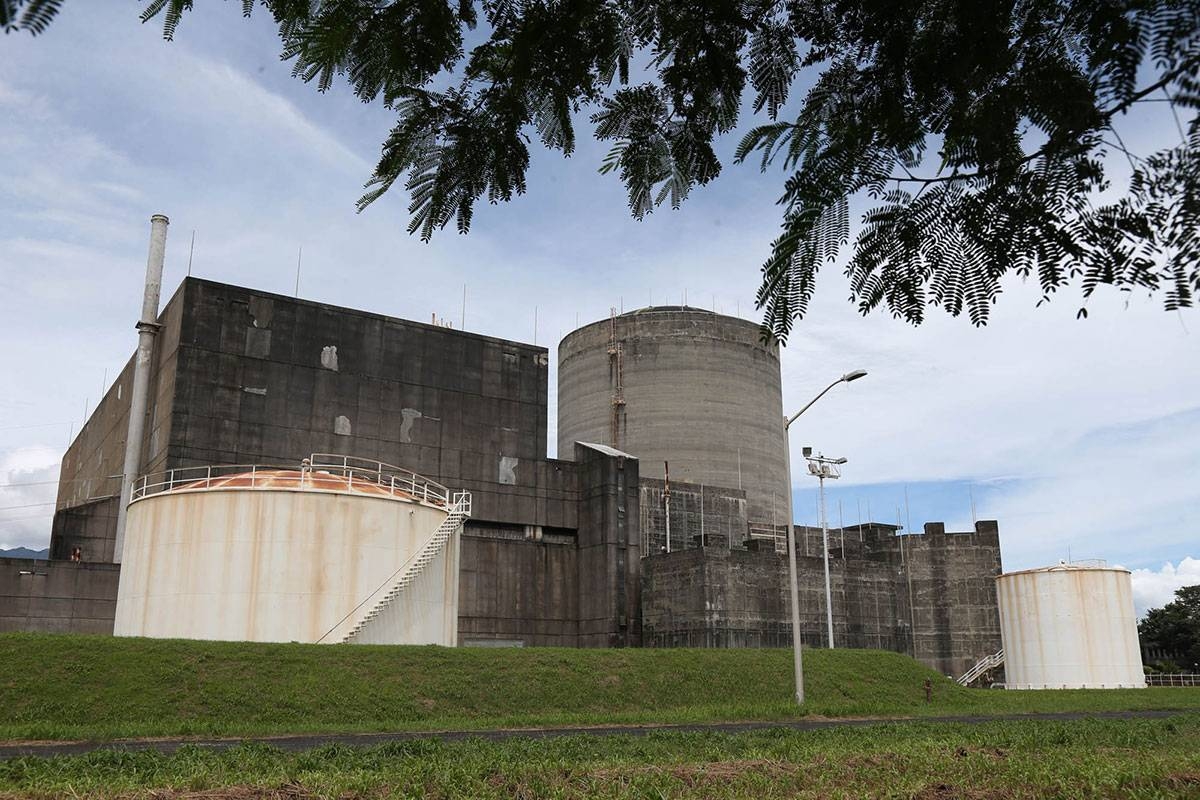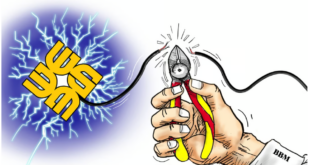THE 20-hour outages in Oriental Mindoro and the recent islandwide blackout in Panay underscore the need for the government to step up efforts to solve lingering problems in generating and distributing electricity. They also shone the spotlight on reducing the domination of fossil fuels in the country's energy generation mix.
Renewable energy sources like solar and wind have been touted as the wave of the future in power generation. They do not pollute the air, ground or sea. The biggest plus is that renewables could free economies from the volatility of coal and oil prices.
The downside is that starting up a solar or wind farm or a biomass plant can be terribly expensive, and only high-stakes investors are willing to jump in.
Another alternative source that the Philippines is keen on exploring is nuclear energy.

In 1976, work began on the Bataan Nuclear Power Plant. It was one of two 620-megawatt nuclear plants that then-president Ferdinand Marcos Sr. wanted built to cushion the country from the impact of the OPEC oil embargo. The plants were designed to generate enough electricity to supply Luzon.
Safety issues delayed construction, but by 1984, the plant was almost complete. It was never switched on.
After the People Power Revolution in February 1986, the plant was put on ice, mainly because of the ripples from the Chernobyl disaster in April that year.
The Fukushima tragedy in March 2011 reinforced concerns about building nuclear complexes. It also fueled the trend toward more compact and cheaper nuclear facilities, called small modular reactors (SMRs).
SMRs can be factory-assembled and transported to a location for installation. They can be integrated into an existing grid or function as a standalone power source for isolated areas.
The International Atomic Energy Agency says SMRs can produce low-carbon electricity at about a third of the generating capacity of traditional nuclear facilities.
President Ferdinand Marcos Jr. had been looking for a peg on which to hang a nuclear power program, and he found it in SMRs.
Previous attempts to launch such an SMR-based initiative gained little traction. It got a big push in January, when the Department of Energy said it would study the inclusion of nuclear power in the generation mix by developing SMRs.
Early this week, NuScale Power Corp., a US-based company that manufactures SMRs, announced plans to build $7.5 million worth of modular reactors in the Philippines.
Malacañang said the firm's executives relayed their plans to President Marcos, who was on an official visit to Washington, D.C. at the time.
NuScale is partnering with Prime Infrastructure Capital Inc. of the Enrique Razon Jr. group, and will soon look at several possible SMR sites.
'Too expensive, too risky'
NuScale's announcement has unleashed a torrent of opposition. One think tank criticized the company for developing SMR technology that is “too expensive, too risky and too uncertain.”
Other critics cited the finding from a study published in the Proceedings of the National Academy of Sciences in 2020 that “most small modular reactor designs will actually increase the volume of nuclear waste in need of management and disposal, by factors of 2 to 30.”
Local nuclear-free groups claim that SMRs have not been tested enough to determine the benefits they will bring to Filipinos. Environmental watchdogs cautioned that SMR technology was more difficult to maintain than conventional nuclear plants.
“It might be a little too difficult to implement this because there are no existing examples operating these,” Nuclear and Coal-Free Bataan Movement coordinator Veronica Cabe said in an interview. “So the question is: are they just going to use us as guinea pigs? What will be our role here?”
The debate over SMRs has just begun. The technology does offer a chance for the country to ease the stranglehold of oil, coal and other fossil-based fuels and hasten the transition to cleaner and cheaper energy. But the advantages have to be weighed against the risks the new technology brings.
The government would be wise to temper its initial enthusiasm and evaluate the performance of SMRs already operating in several countries before giving the technology its imprimatur.
*****
Credit belongs to : www.manilatimes.net
 Atin Ito First Filipino Community Newspaper in Ontario
Atin Ito First Filipino Community Newspaper in Ontario






